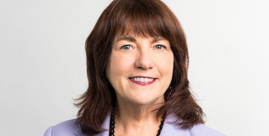
By Susan C. Reinhard, RN, PhD, FAAN
Senior Vice President and Director, AARP Public Policy Institute & Chief Strategist, Center to Champion Nursing in America
Download PDF
As COVID-19 threatens people on every continent, the need to harness the full power of the nursing profession has never been more critical. It’s a goal that both AARP and the World Health Organization (WHO) have long worked toward. And in a strange twist of fate, as nurses across the globe sacrifice so much, WHO long ago had declared that 2020 would be the Year of the Nurse and Midwife. As part of its focus on this huge part of the world’s health care workforce, it delivered its first State of the World’s Nursing report on World Health Day, April 7.
Similarly, AARP awaits a report from the National Academy of Medicine (NAM) on nursing—its second report aimed at wisely guiding the growth of this critically important field.
Never has the health of the world depended so much on the power of nursing.
Promoting Nursing to Promote Health
Even before the novel coronavirus pandemic began, it was clear that we live in a time of increasingly urgent health concerns, including an aging population; a rise in chronic health conditions; massive shifts in technology that can both help and hinder health care providers; and the lack of access many communities have to fresh food, and clean air, even public transportation and good schools—all factors of health and well-being. To learn about the recent efforts of WHO and AARP is to understand the dominant role nurses have in meeting those needs.
As WHO notes, globally, nurses and midwives account for nearly 50 percent of the health workforce. Worldwide, nurses are often the first and sometimes the only health professional that people see. They are part of their local community and can shape and deliver effective interventions to meet the needs of patients, families, and communities. The report from WHO is a culmination of its three-year global campaign started in 2018 with the International Council of Nurses that aims to improve health by raising the profile and status of nursing.
That goal is familiar to AARP, which in 2007, with AARP Foundation and the Robert Wood Johnson Foundation, created the Center to Champion Nursing in America (CCNA). CCNA’s mission is to make sure that everyone in America has access to a nurse when and where they need highly skilled care.
CCNA’s efforts were expanded in 2010 by “The Future of Nursing: Leading Change, Advancing Health”—the first assessment of nursing from the National Academy of Medicine (then known as the Institute of Medicine). The report set out specific goals that government, businesses, educators, policy makers, and health organizations could take to tap into the power of nurses. Recommendations include changing laws that restrict nurses from fully exercising their skills, encouraging nurses to increase their level of education, and creating a more diverse workforce to care for an increasingly multicultural nation.
The report also led the same three organizations that fund CCNA to create the Future of Nursing: Campaign for Action to implement the goals in every state.
Year of the Nurse
At 4 million strong, nurses are by far the largest proportion of America’s health care workforce, and the U.S. public has told Gallup for 18 years straight that it trusts the nursing profession more than all others. Because they are also woven into the fabric of the community in ways other health practitioners are not—in schools, workplaces, homes, prisons, hospitals, assisted living facilities, and other community spaces—they are positioned to be a more powerful part of improving health and health equity.
The Campaign’s ambitions on multiple fronts match those of WHO’s three-year campaign, Nursing Now, which is also designed to meet head-on the changing needs of the 21st century. As it states in its vision, Nursing Now—and WHO—understands that nurses will have an even greater role to play in the future, with an increased focus on prevention and making better use of technology.
The Future of Nursing 2020-2030, the forthcoming report from the NAM, is expected to reflect many of the same principles. Food resources, housing insecurity, restricted transportation options—these social determinants of health are AARP priorities, too, and are aspects of more livable communities that CCNA knows nurses help with, too.
AARP and WHO both have long understood that nurses are the key to improving health for all and reducing health disparities around the globe. As a pandemic envelops the global population, the U.S. and international reports being unveiled this year will lay out strategies for how to unleash the expertise and power in the nursing profession, at a time when health support is needed as never before.
Suggested Citation
Reinhard, Susan C. 2020. "Year of the Nurse and Midwife: AARP and WHO." AARP International: The Journal, vol.13. 34-35. https://doi.org/10.26419/int.00045.016
about the author
Susan C. Reinhard is a senior vice president at AARP, directing its Public Policy Institute, the focal point for public policy research and analysis at the state, federal, and international levels. She also serves as the chief strategist for the Center to Champion Nursing in America. Susan is a nationally recognized expert in health and long-term care policy, with extensive experience in conducting, directing, and translating research into action to promote policy change.